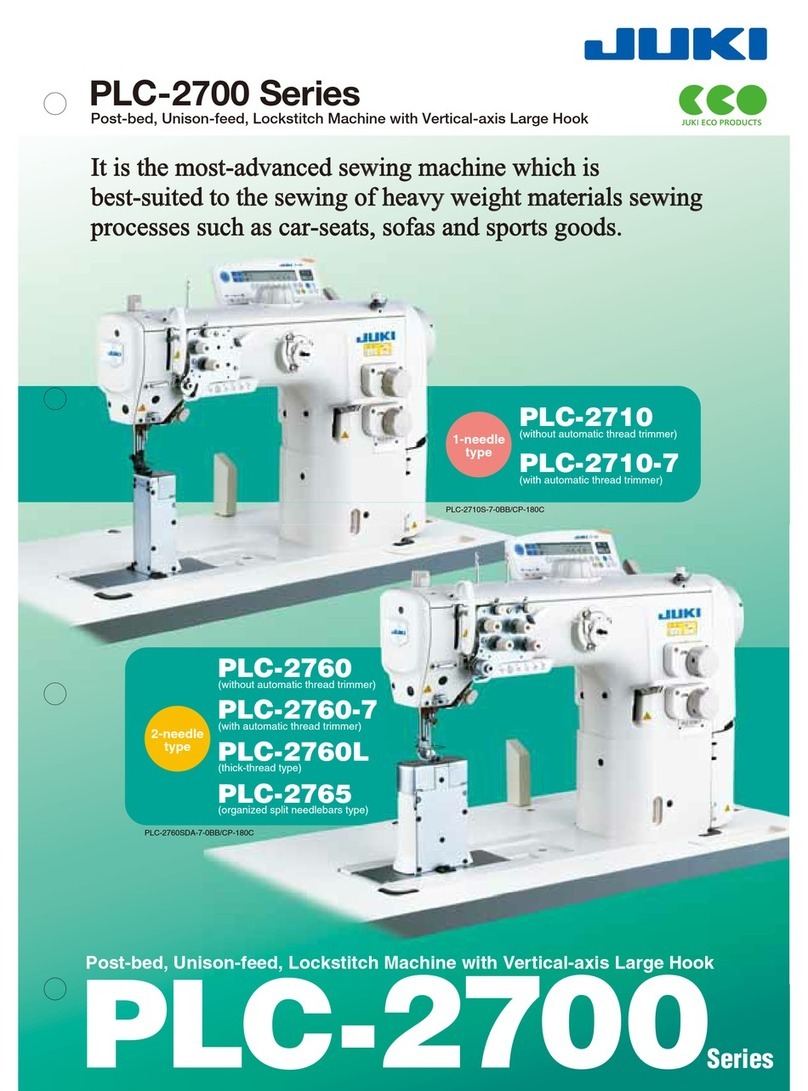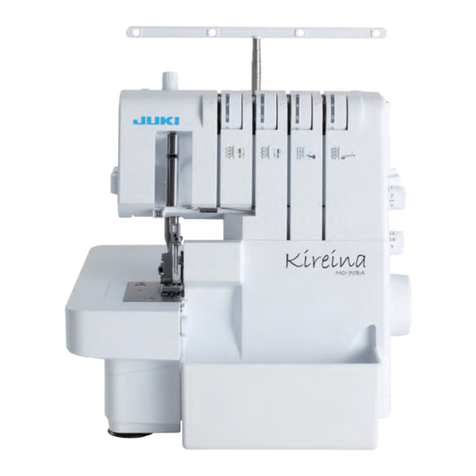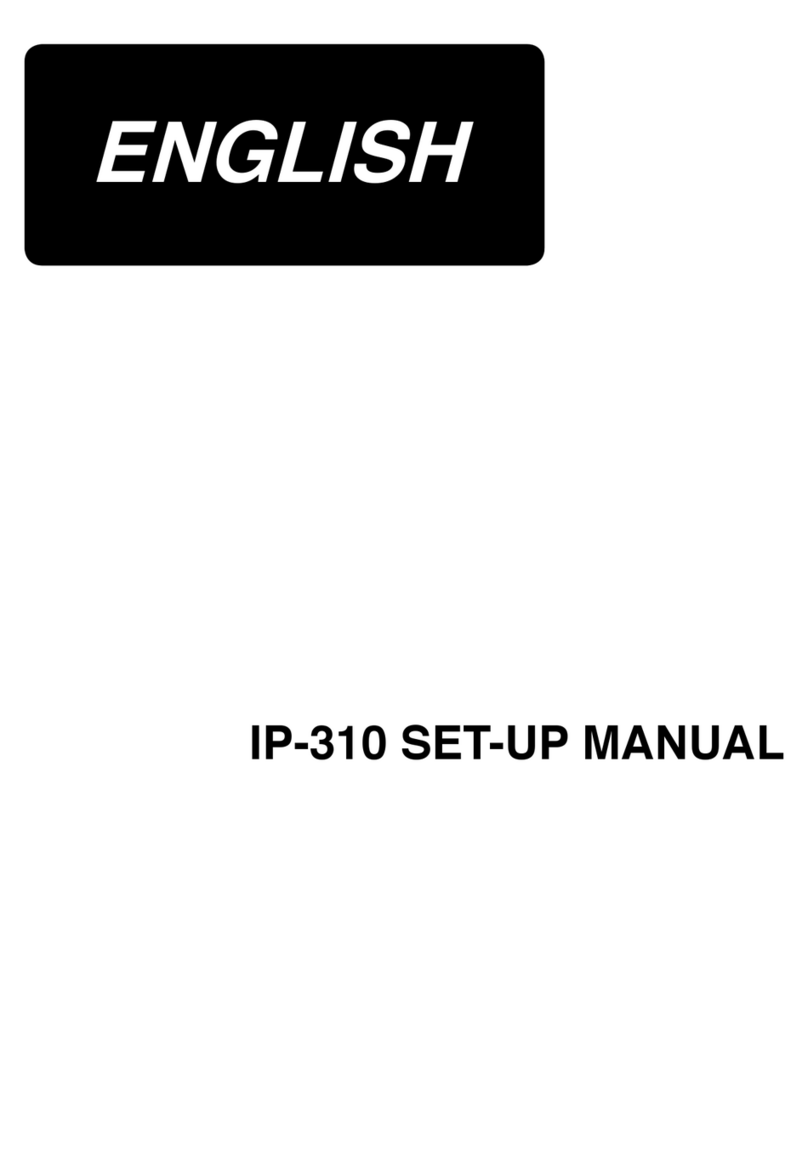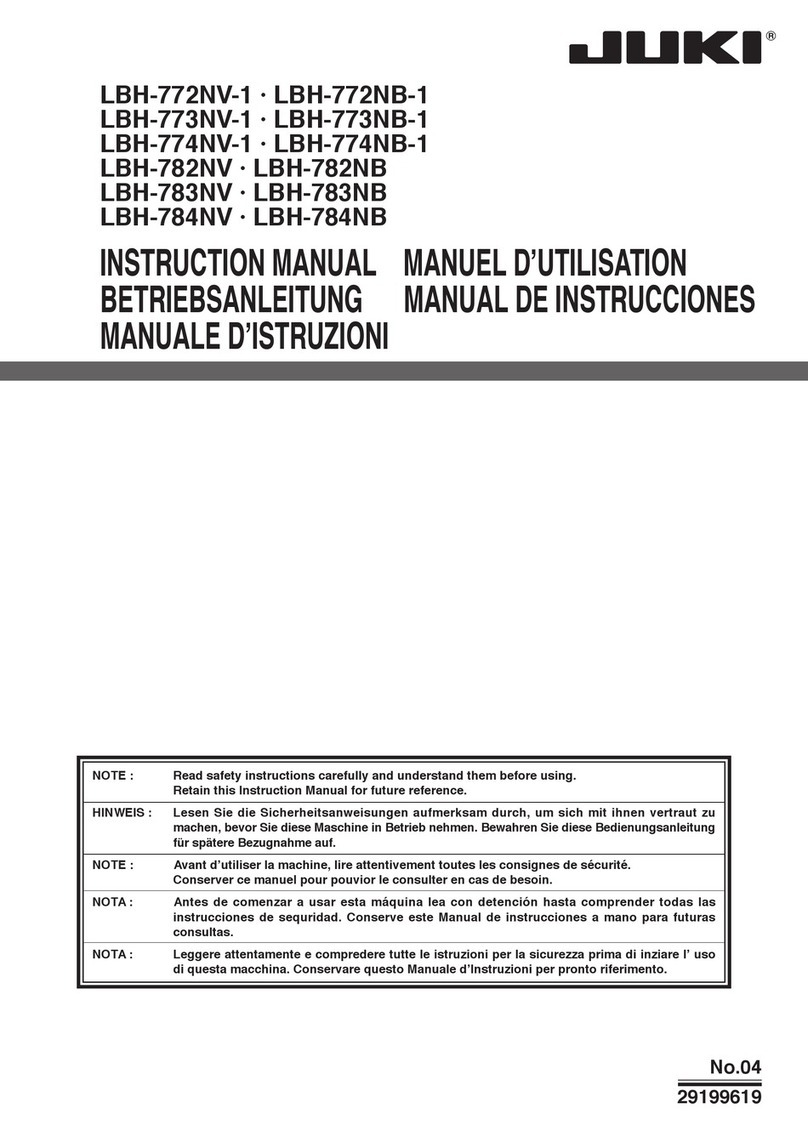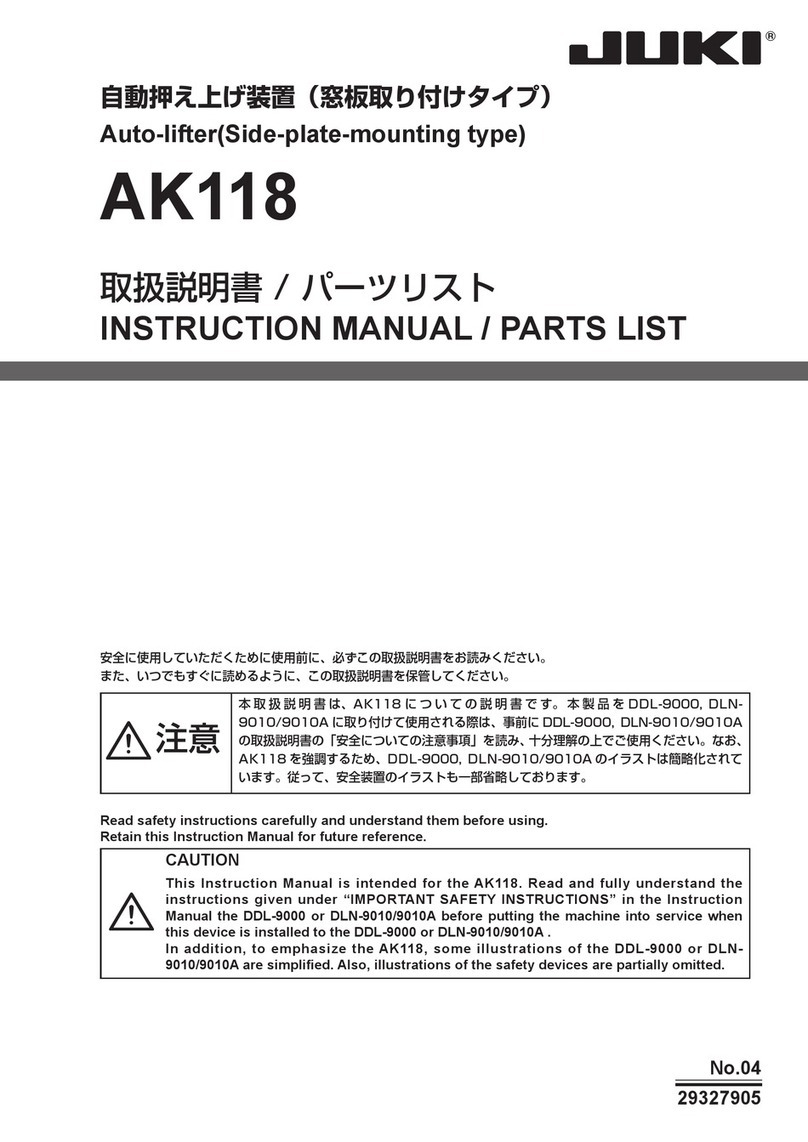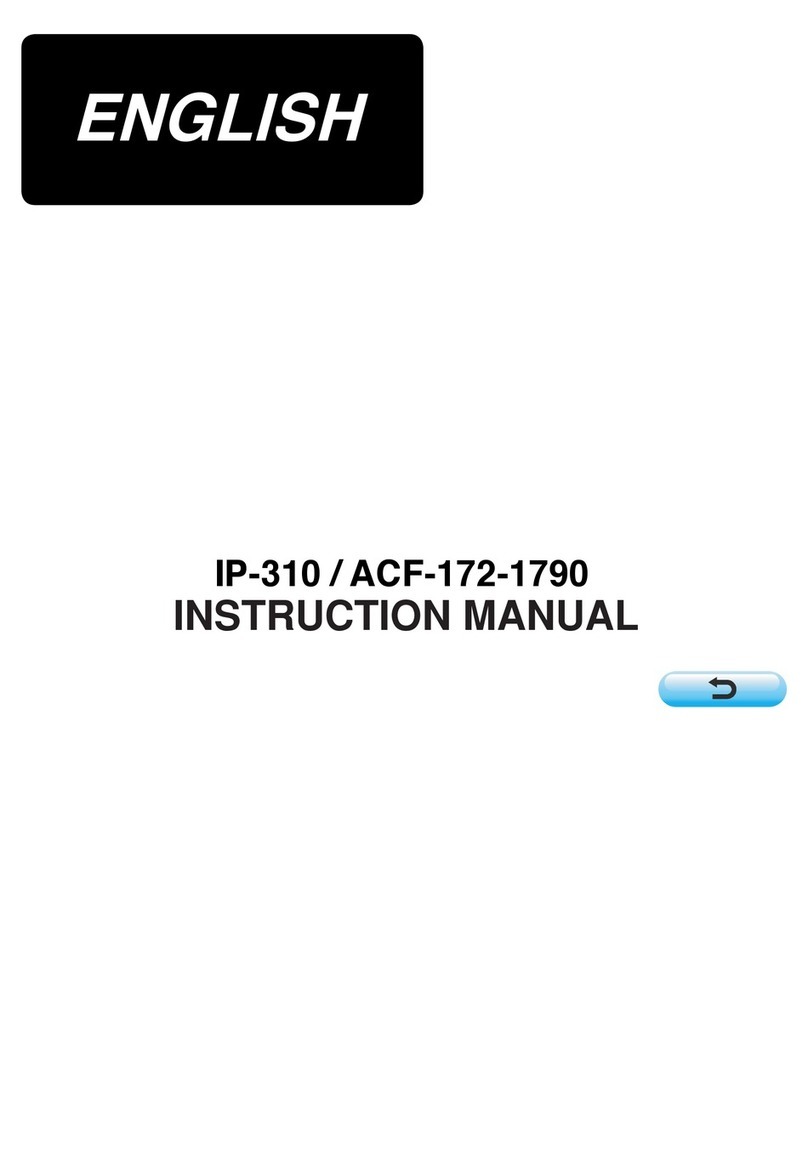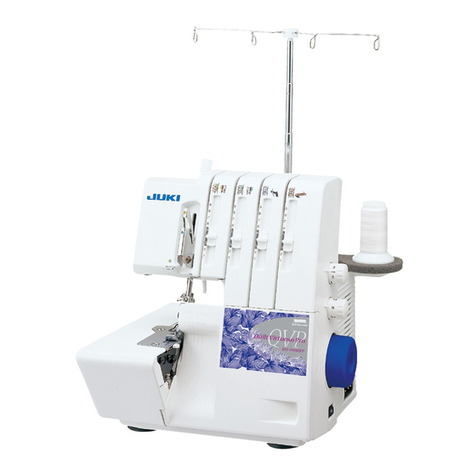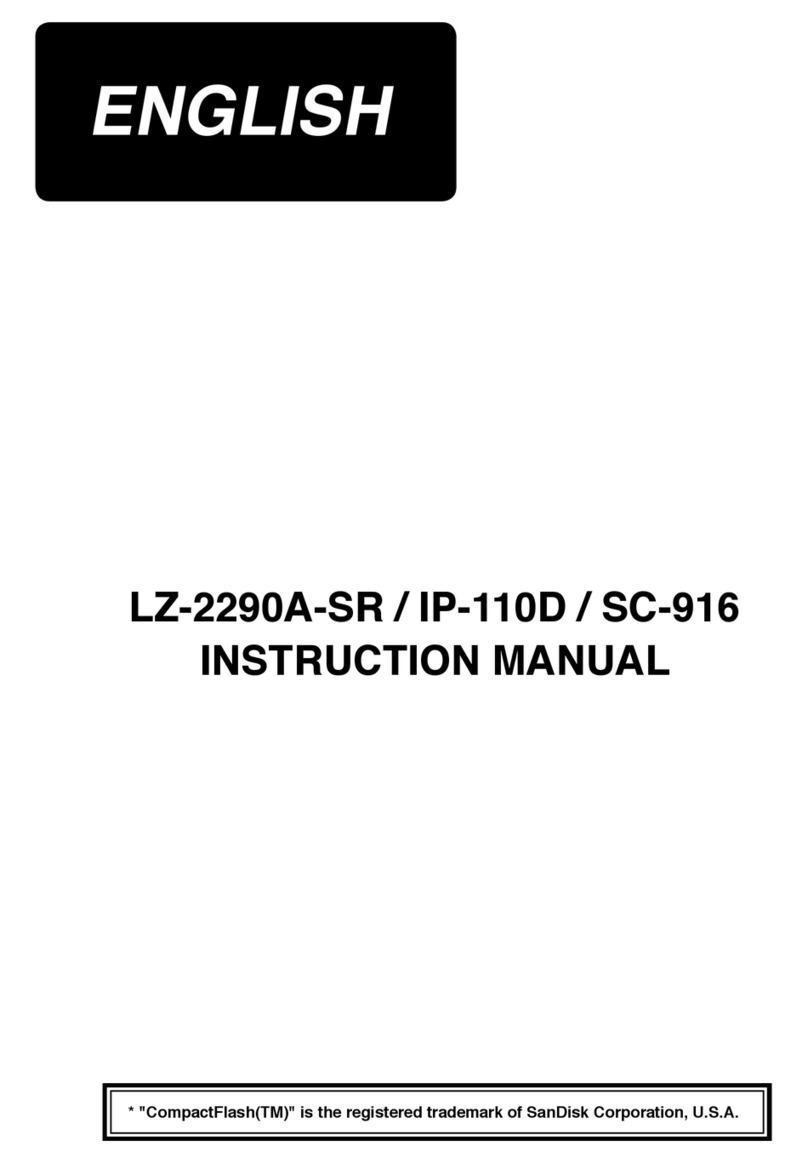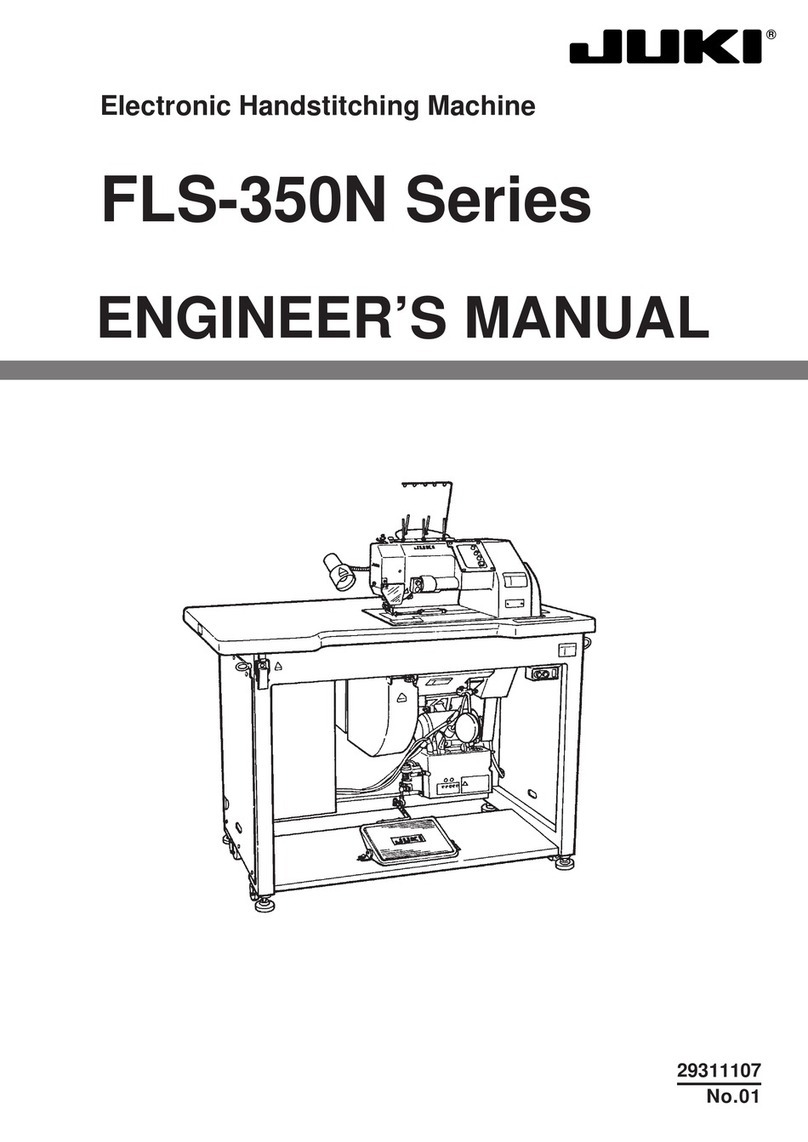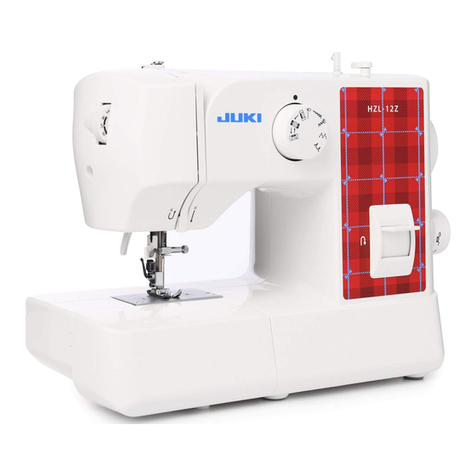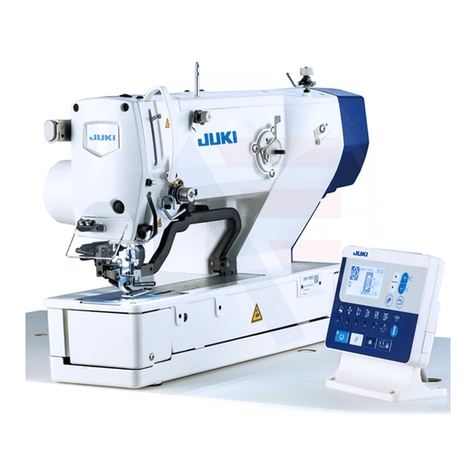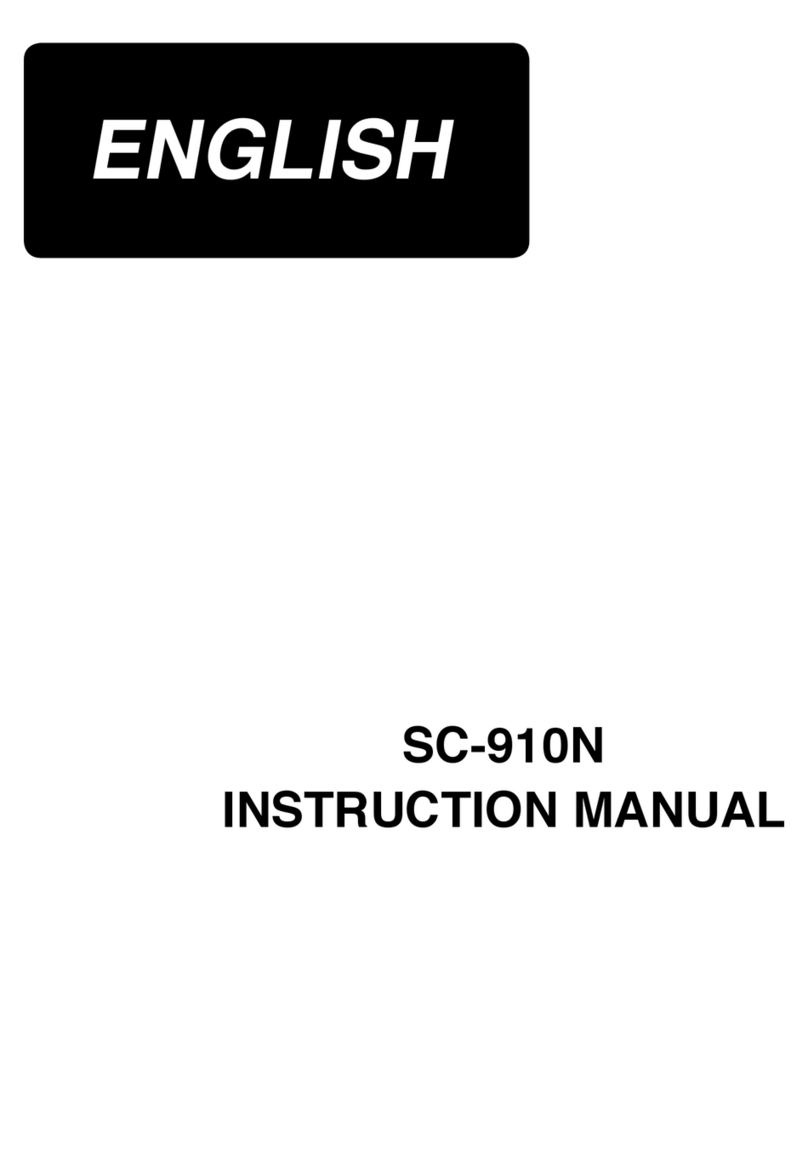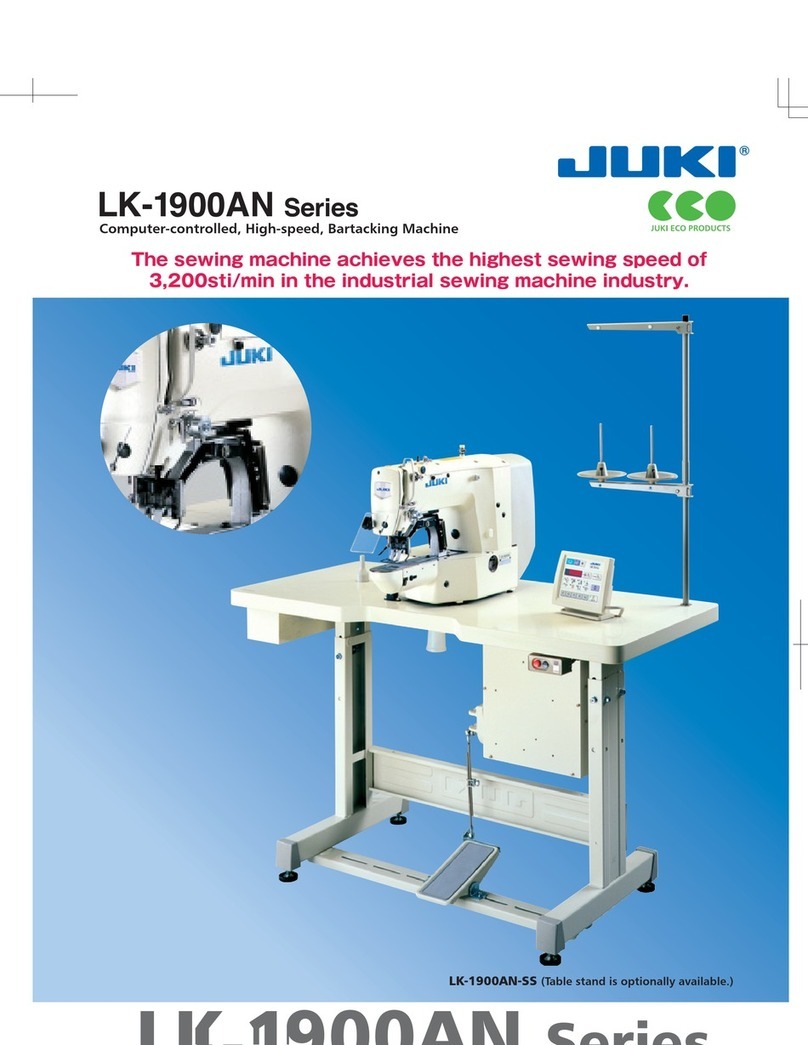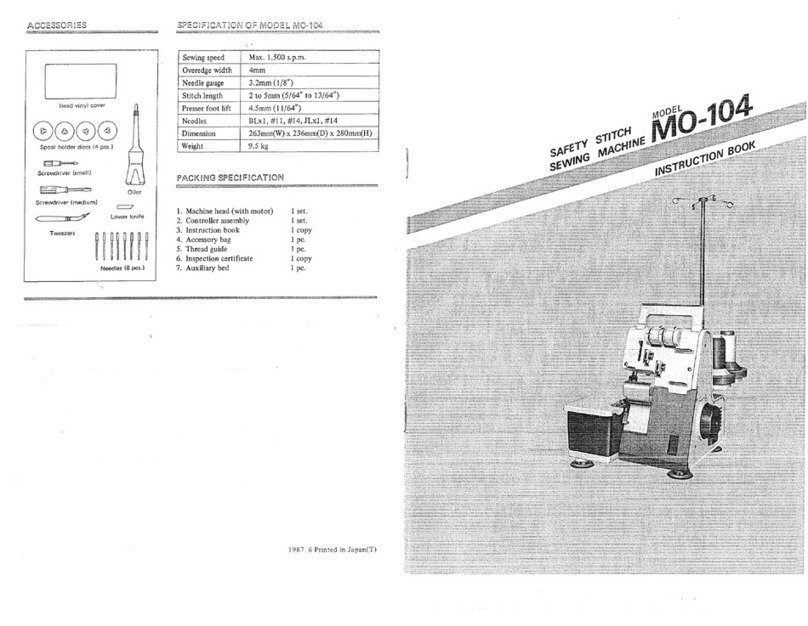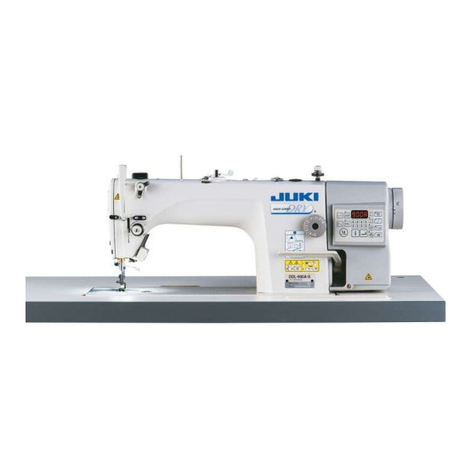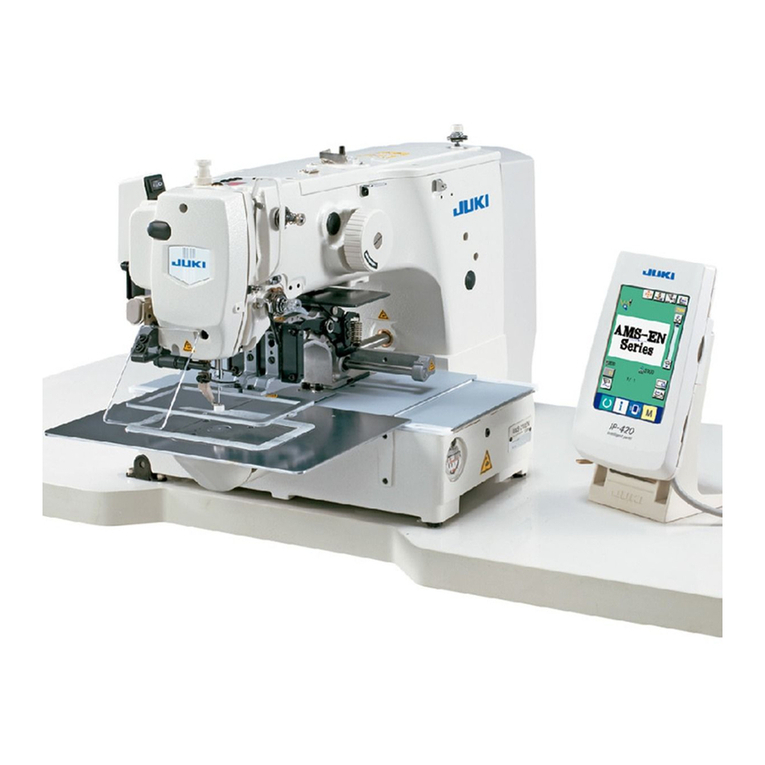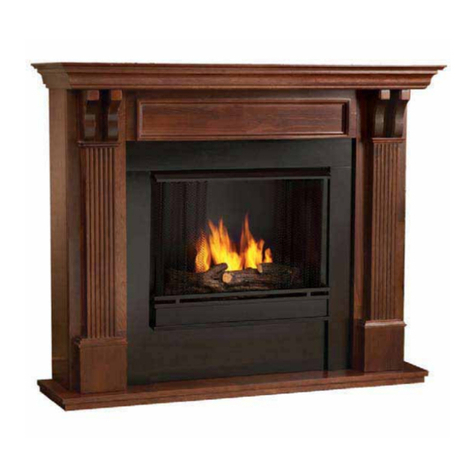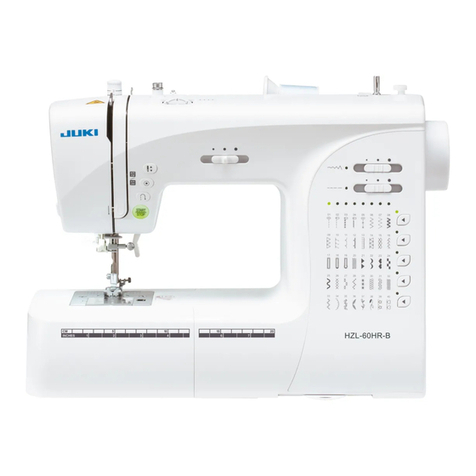
i
CONTENTS
1. SPECIFICATIONS............................................................................................................ 1
2. NAME OF EACH COMPONENT ..................................................................................... 3
3. INSTALLATION................................................................................................................ 4
3-1. Caution at the time of set-up ................................................................................................................................ 4
3-2. Installation of the sewing machine ...................................................................................................................... 5
3-3. Adjusting the height of the knee lifter ................................................................................................................. 7
3-4. Installation of thread stand................................................................................................................................... 7
4. PREPARATION OF THE SEWING MACHINE ................................................................8
4-1. Method of lubrication ............................................................................................................................................ 8
4-2. Lubrication to the oil tank..................................................................................................................................... 9
4-3. Draining of oil from the oil tank ......................................................................................................................... 10
4-4. Adjusting the amount of oil in the hook ............................................................................................................ 10
4-5. Oil in the feed box ............................................................................................................................................... 12
4-6. Applying grease................................................................................................................................................... 13
4-7. Installing the belt cover and the bobbin thread winder ................................................................................... 16
4-8. Attaching the needles ......................................................................................................................................... 16
4-9. How to take out the bobbin case ....................................................................................................................... 17
4-10. Insertlng a bobbin in a bobbin case ................................................................................................................ 17
4-11. Threading the machine head ............................................................................................................................ 18
4-12. Thread tension................................................................................................................................................... 19
4-13. Thread take-up spring....................................................................................................................................... 20
4-14. Adjusting the stitch length ............................................................................................................................... 21
4-15. Needle-to-hook relation .................................................................................................................................... 21
4-16. Adjusting the needle stop position.................................................................................................................. 23
4-17. Pedal pressure and pedal stroke ..................................................................................................................... 24
4-18. Adjustment of the pedal.................................................................................................................................... 24
5. OPERATION OF THE SEWING MACHINE .................................................................. 25
5-1. Pedal Operation ................................................................................................................................................... 25
5-2. Hand lifter............................................................................................................................................................. 25
5-3. Adjusting the pressure of the presser foot ....................................................................................................... 26
5-4. Micro-lifter ............................................................................................................................................................ 26
5-5. Thread tension release changeover when using the knee lifter ..................................................................... 27
5-6. One-touch manual reverse feed (One-touch reverse feed type)..................................................................... 27
6. MAINTENANCE ............................................................................................................. 28
6-1. Changing procedure to bottom feed and the adjustment (for LH-3528 only)................................................ 28
6-2. Changing procedure to needle feed and the adjustment (for LH-3528 only)................................................. 29
6-3. Adjusting the hook needle guard....................................................................................................................... 30
6-4. Adjusting the inner hook guide.......................................................................................................................... 30
6-5. Adjusting the height and the inclination of the feed dog ................................................................................ 31
6-6. Replacing the gauge ........................................................................................................................................... 32
6-7. Adjusting the thread presser spring.................................................................................................................. 33
6-8. Adjusting the position of the moving knife....................................................................................................... 34
6-9. Position of the wiper ........................................................................................................................................... 35
6-10. Caution when installing the attachments........................................................................................................ 35
6-11. Replacing the bobbin thread slack preventer sprlng (For LH-3568, 3568-7, 3588, 3588-7) ........................ 36
6-12.
Stop of the needle bars and angle of corners for corners stitching (For LH-3568, 3568-7, 3588, 3588-7)....
36
7. STITCH-TO-ANGLE TABLE BY GAUGE (PITCH AND mm CONVERSION TABLE).. 37
8. GAUGE SETS................................................................................................................ 38
9. TROUBLES AND CORRECTIVE MEASURES ............................................................. 47
10. MOTOR PULLEY AND BELT ...................................................................................... 48
